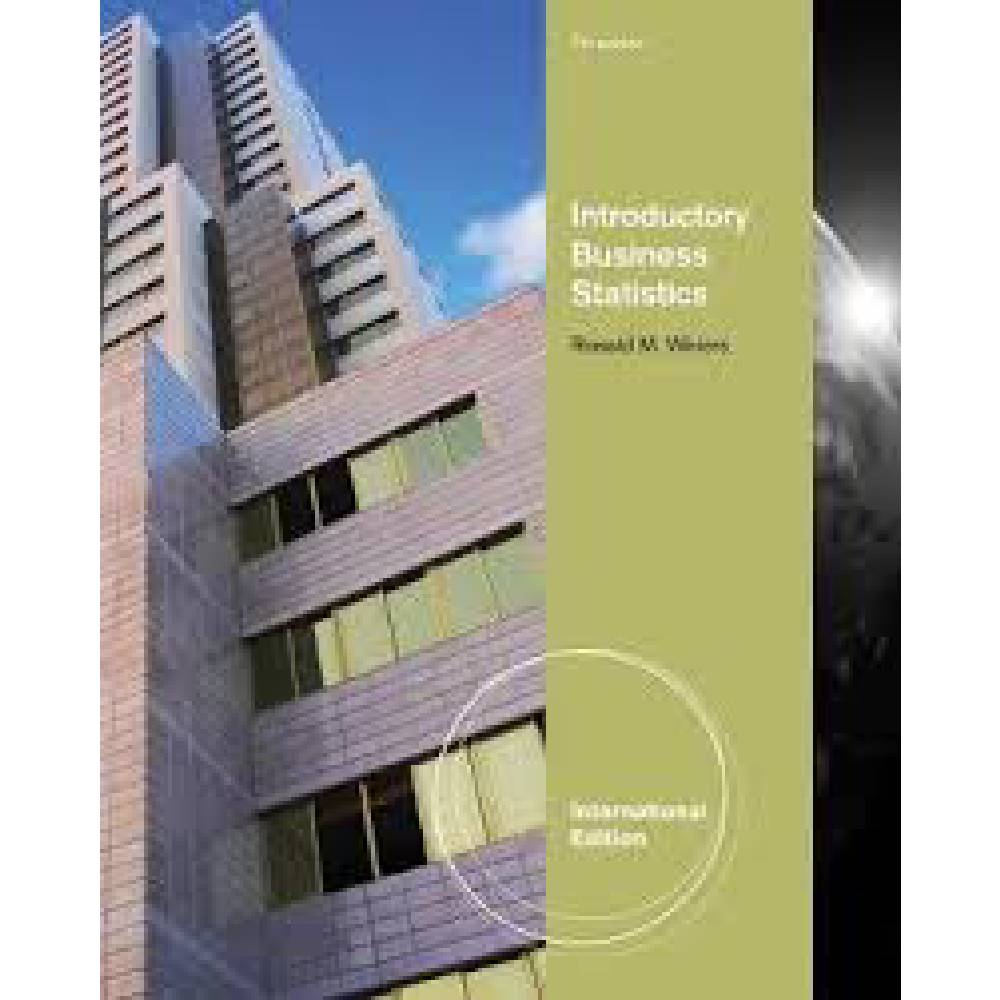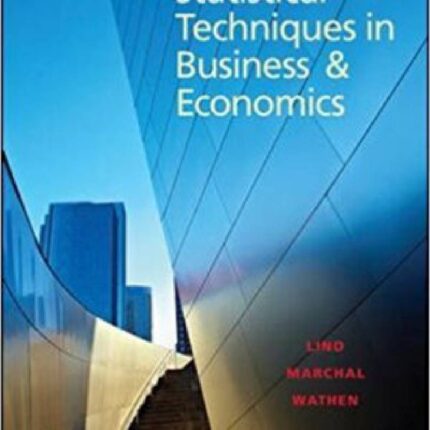Introductory Business Statistics International Edition 7th Edition By Ronald M. Weiers – Test Bank
Chapter 11: Hypothesis Tests Involving Two Sample Means
TRUE/FALSE
1. True or False
When comparing the mean of two dependent samples, we are interested in only one variable: the dif-ference between measurements for each person or object.
ANS: T PTS: 1 OBJ: Section 11.2
2. True or False
A typical example of dependent samples occurs when we have before-and-after measures of the same individuals.
ANS: T PTS: 1 OBJ: Section 11.1
3. True or False
An important factor in choosing between the pooled-variances t-test and the unequal-variances t-test is whether we can assume the population means might be equal.
ANS: F PTS: 1 OBJ: Section 11.1
4. True or False
Although it is often associated only with small-sample tests, the t distribution is appropriate when the population standard deviations are unknown, regardless of how large or small the samples happen to be.
ANS: T PTS: 1 OBJ: Section 11.2
5. True or False
When the population standard deviations are unknown and not assumed to be equal, pooling the sam-ple standard deviations into a single estimate of their common population value is no longer applicable.
ANS: T PTS: 1 OBJ: Section 11.3
6. True or False
When the population standard deviations are unknown and are not assumed to be equal, s1 and s2 must be used to estimate their respective population standard deviations, 1 and 2.
ANS: T PTS: 1 OBJ: Section 11.3
7. True or False
The number of degrees of freedom associated with the unequal-variances t-test for comparing the means of two independent samples is n1 + n2 – 2.
ANS: F PTS: 1 OBJ: Section 11.3
8. True or False
When either test can be applied to the same data, the z-test for comparing the means of two inde-pendent samples is preferable to the unequal-variances t-tests, especially when doing the test with computer assistance.
ANS: F PTS: 1 OBJ: Section 11.3
9. True or False
The z-test requires no assumptions about the shape of the population distributions as long as both n1 and n2 are 30.
ANS: T PTS: 1 OBJ: Section 11.4
10. True or False
The z-test approximation to the unequal variance t-test assumes that the population standard devia-tions, 1 and 2 , are known.
ANS: F PTS: 1 OBJ: Section 11.4
11. True or False
If we wish to examine the before-and-after productivity of individual employees after a change in their workstation layout, a matched-pairs t-test is applicable.
ANS: T PTS: 1 OBJ: Section 11.5
12. True or False
If we wish to compare the before-and-after reading speeds of individual participants in a speed-reading course, the z-test for comparing the means of two independent samples is appropriate.
ANS: F PTS: 1 OBJ: Section 11.5
13. True or False
The comparison of sample proportions from two independent samples relies on the t-distribution and assumes that the two populations are normally distributed.
ANS: F PTS: 1 OBJ: Section 11.6
14. True or False
The F distribution is the sampling distribution of that would result if two samples were repeat-edly drawn from the same, normally distributed population.
ANS: T PTS: 1 OBJ: Section 11.7
15. True or False
Unlike the t distribution, the exact shape of the F distribution is determined by two different degrees of freedom instead of just a single value.
ANS: T PTS: 1 OBJ: Section 11.7













Reviews
There are no reviews yet.